A #10 can is a ubiquitous container found in various industries, known for its standardized size and versatility. Measuring approximately 6.25 inches in diameter and 7 inches in height, the #10 can holds around 3 quarts or 96 fluid ounces of contents. Its name originates from the early days of can manufacturing when cans were designated by numbers rather than sizes in ounces or milliliters.
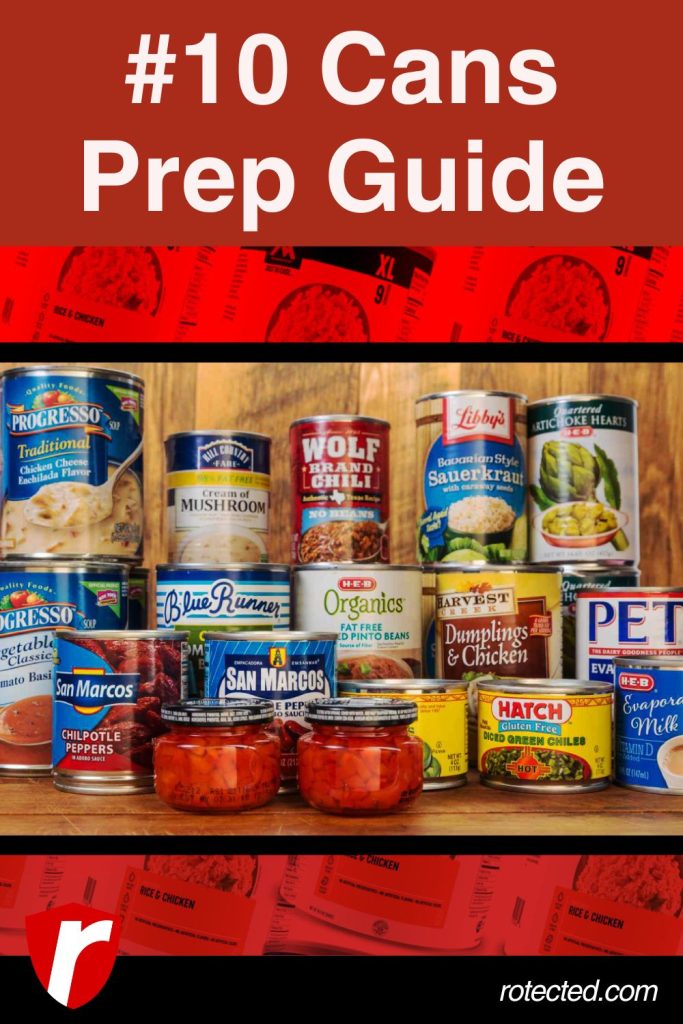
Historically, the #10 can played a pivotal role in the development of canned food preservation, dating back to the 19th century. Its introduction revolutionized food storage, distribution, and consumption, particularly during times of war and exploration when reliable preservation methods were crucial.
#10 cans are large, durable containers typically used for storing bulk food items. They are popular during emergencies due to their ability to hold significant quantities of food in a compact and stackable format, providing long-term sustenance for families and individuals.
Understanding the #10 Can
The #10 can’s standardized dimensions make it easy to identify and incorporate into various storage systems. Typically, it measures 6.25 inches in diameter and stands 7 inches tall. This cylindrical shape allows for efficient stacking and storage, optimizing space in pantries, warehouses, and commercial kitchens.
With a capacity of approximately 3 quarts or 96 fluid ounces, the #10 can accommodate a wide range of products, from soups and sauces to fruits and vegetables. Its ample size makes it ideal for bulk packaging, reducing the need for frequent refills and minimizing waste.
Materials Used in Manufacturing
#10 cans are commonly made from tin-plated steel or aluminum, both of which offer excellent durability and protection against moisture, light, and air.
Tin-plated steel cans are the traditional choice, prized for their strength and resistance to corrosion. However, aluminum cans are gaining popularity due to their lightweight nature and recyclability.
The interior of #10 cans is typically coated with a food-grade lacquer or enamel to prevent interaction between the contents and the metal, ensuring product safety and quality. This protective barrier also enhances the can’s resistance to acidic or alkaline foods, prolonging shelf life and preserving flavor.
Common Uses
The versatility of #10 cans extends across a multitude of industries, each leveraging its unique attributes to meet specific needs.
In the food service industry, #10 cans are a staple for storing and transporting bulk ingredients, such as sauces, toppings, and condiments. Their standardized size facilitates inventory management and portion control, streamlining kitchen operations and minimizing waste.
Similarly, institutional food preparation facilities, including schools, hospitals, and military bases, rely on #10 cans to support large-scale meal production. From cafeteria lunches to emergency rations, these cans provide a convenient and cost-effective solution for feeding a crowd.
Beyond the culinary realm, #10 cans find application in non-food sectors, such as janitorial supplies, automotive fluids, and industrial adhesives. Their sturdy construction and uniform dimensions make them suitable for packaging a wide range of products, ensuring safe storage and transportation.
The Role of #10 Cans in Food Storage
Benefits of Using #10 Cans for Food Storage
The #10 can offers several advantages for food storage, making it a popular choice among both home cooks and commercial food establishments.
Firstly, its large capacity allows for storing bulk quantities of food, reducing the need for frequent restocking and minimizing packaging waste.
Additionally, #10 cans are durable and airtight, protecting contents from moisture, pests, and oxidation, thereby extending shelf life and preserving freshness. Furthermore, their standardized size facilitates efficient organization and stacking, optimizing storage space in pantries, basements, and warehouses.
Types of Foods Suitable for #10 Cans
A wide variety of foods are suitable for storage in #10 cans, ranging from dry goods to liquids and semi-liquids.
Common examples include grains, legumes, pasta, sauces, soups, fruits, and vegetables. These cans are particularly well-suited for long-term storage of dehydrated or freeze-dried foods, as well as commercially canned goods transferred into larger containers.
It’s important to consider the acidity and moisture content of the food when selecting #10 cans for storage, as acidic or highly moisture-sensitive foods may require additional protective measures.
For those of you who enjoy camping and hiking, these cans are great for storing backcountry cooking foods. You can also use them to preserve beans!
Shelf Life and Preservation Methods
The shelf life of foods stored in #10 cans varies depending on factors such as the type of food, storage conditions, and preservation methods employed. Generally, properly sealed and stored foods can maintain quality for extended periods, often ranging from one to five years or more.
Preservation methods commonly used in conjunction with #10 cans include vacuum sealing, nitrogen flushing, and oxygen absorbers, all of which help to inhibit microbial growth and maintain product integrity.
Regular inspection and rotation of stored foods are recommended to ensure freshness and minimize waste.
Our Favorite Canned Foods | #10 Cans
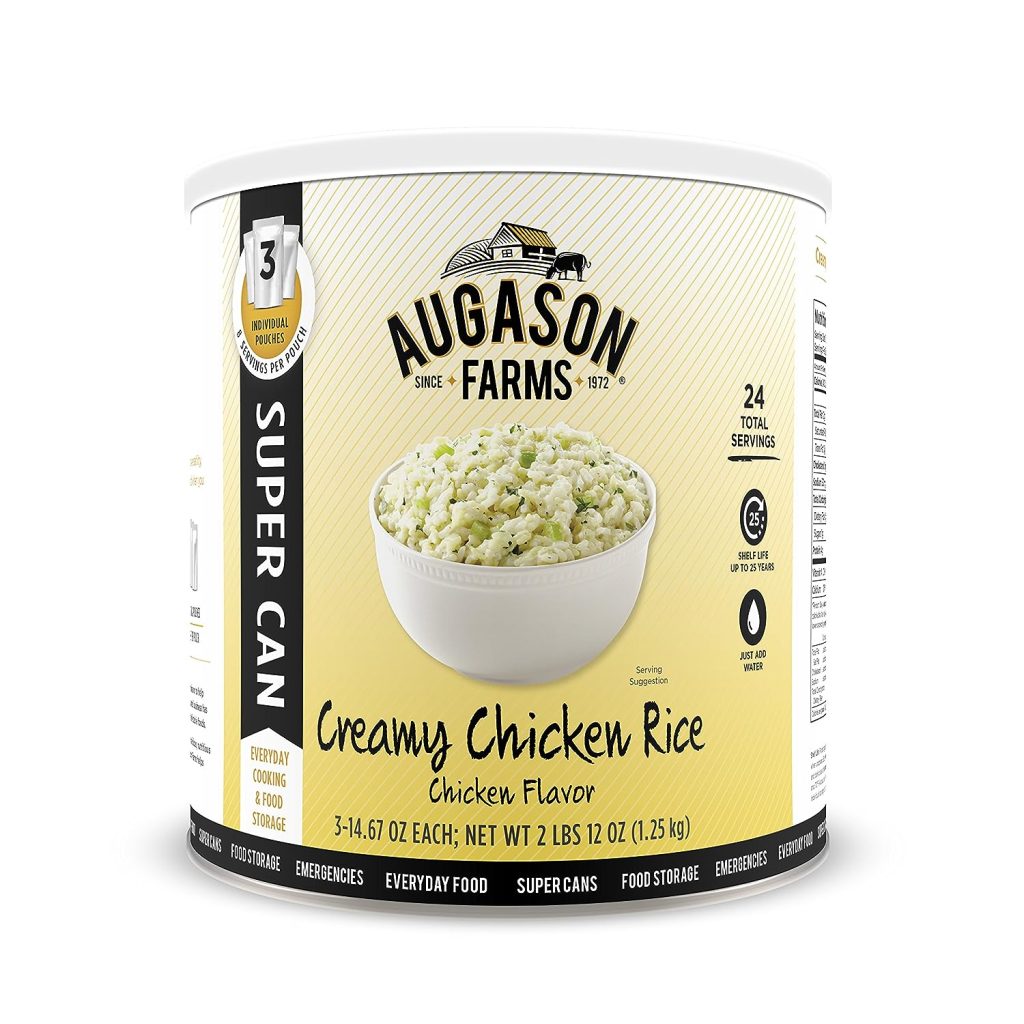
Augason Farms Creamy Chicken Rice
2 lbs 12 oz No. 10 Super Can
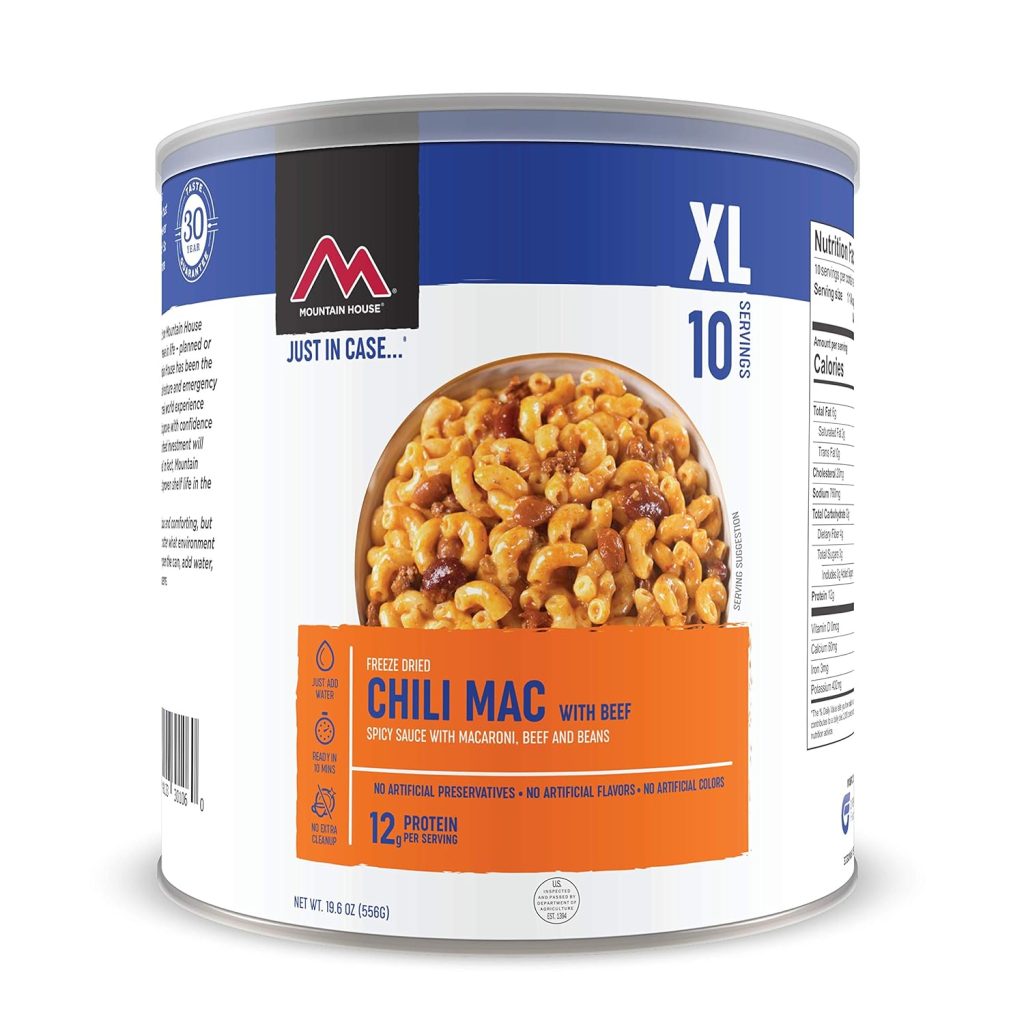
Mountain House Chili Mac with Beef
Freeze Dried Survival & Emergency Food | #10 Can
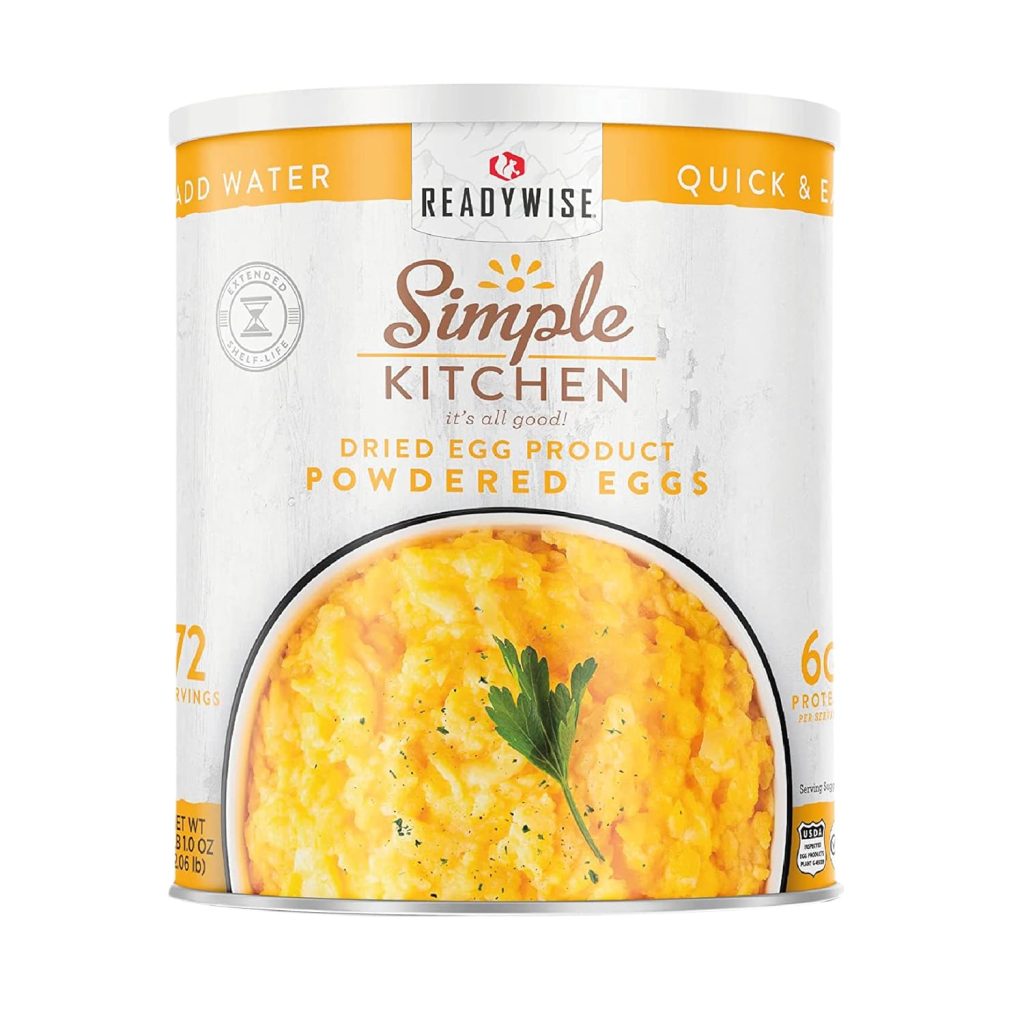
READYWISE Powdered Eggs
Simple Kitchen, Powdered Eggs, 72 Servings, Emergency Food Supply!
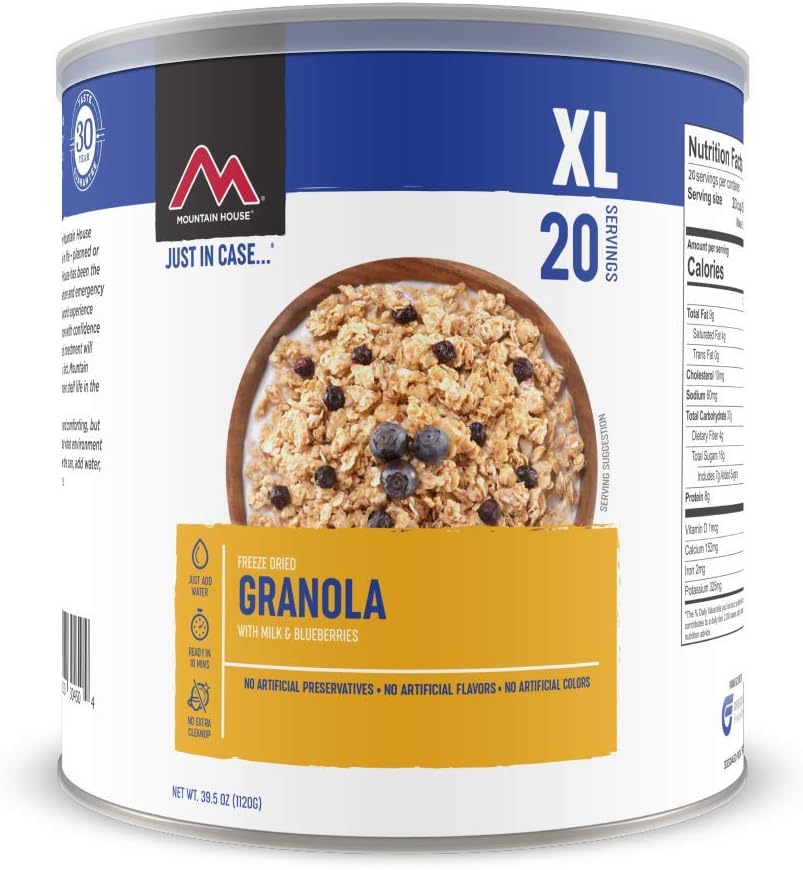
Mountain House Granola with Milk & Blueberries
Freeze Dried Survival & Emergency Food | #10 Can
Commercial Applications of #10 Cans
In the food service industry, #10 cans are indispensable for storing and dispensing bulk ingredients used in commercial kitchens, restaurants, and catering operations. From sauces and dressings to toppings and garnishes, these cans facilitate efficient inventory management, portion control, and meal preparation. Their durable construction and airtight seals ensure product safety and freshness, minimizing food waste and optimizing cost-effectiveness.
Institutional Food Preparation
Institutional food preparation facilities, including schools, hospitals, and military installations, rely on #10 cans to meet the dietary needs of large populations efficiently. Whether serving hot meals in cafeteria settings or providing emergency rations during crises, these cans offer a convenient and scalable solution for storing and distributing food. Their standardized size and labeling facilitate compliance with food safety regulations and dietary guidelines, ensuring consistency and quality across meal services.
Bulk Food Packaging
Beyond the food service sector, #10 cans are utilized for bulk packaging of various food and non-food products, including dry goods, beverages, and industrial supplies. Manufacturers and distributors appreciate the cost-effectiveness and reliability of #10 cans for packaging and shipping large quantities of goods.
Their uniform dimensions and stackability facilitate palletizing and storage in warehouses, streamlining logistics and inventory management processes.
Creative Uses of #10 Cans in Everyday Life
DIY Projects and Crafts
The sturdy construction and cylindrical shape of #10 cans make them ideal for a wide range of DIY projects and crafts. From pencil holders and plant pots to lanterns and storage containers, these cans can be repurposed and decorated in countless creative ways.
Their versatility and affordability inspire imaginative reuse, turning ordinary containers into functional and decorative items for home decor, gifts, and organizational solutions.
Gardening and Plant Cultivation
Gardeners and plant enthusiasts appreciate the #10 can’s suitability for gardening and plant cultivation. Its ample size accommodates large plants and deep root systems, making it an excellent container for growing vegetables, herbs, and flowers.
With proper drainage and soil preparation, #10 cans can be transformed into portable planters for indoor and outdoor use, allowing gardeners to maximize space and optimize growing conditions.
Organizational and Storage Solutions
In addition to its decorative and horticultural uses, the #10 can serves as a practical solution for organizing and storing household items. Whether corralling office supplies, sorting crafting materials, or tidying up kitchen clutter, these cans offer a simple and customizable storage solution.
Their uniform size and stackability make them especially useful for creating modular storage systems, maximizing space in closets, cabinets, and shelves.
Tips for Using #10 Cans Effectively
To ensure maximum freshness and longevity, it’s important to properly seal #10 cans using appropriate methods such as can seaming machines, vacuum sealers, or manual crimping tools. Be sure to remove any excess air from the can before sealing to minimize oxidation and prolong shelf life.
Store sealed cans in a cool, dry, and dark environment away from direct sunlight and fluctuating temperatures to maintain product quality.
Labeling and Organization
Maintaining accurate labeling and organization is essential for efficient inventory management and product rotation. Clearly label each #10 can with the contents, date of packaging, and any relevant storage instructions or expiration dates. Organize cans by category or usage, grouping similar items together for easy access and inventory tracking. Consider implementing a first-in, first-out (FIFO) system to ensure older products are used before newer ones to minimize waste.
Recycling and Eco-Friendly Disposal
Once #10 cans have served their purpose, they can be recycled to minimize environmental impact and conserve resources.
Check with local recycling facilities to determine their policies regarding metal can recycling and follow their guidelines for preparation and disposal.
Consider repurposing empty cans for other uses or upcycling them into creative projects before recycling to extend their lifecycle and reduce waste.
Fun fact: A study found that people who eat canned foods also have higher intakes of 17 essential nutrients – including calcium and fiber!
Final Thoughts
#10 cans offer a versatile solution for a wide range of storage needs across various industries and applications. Whether in the bustling kitchens of restaurants, the organized chaos of DIY workshops, or the meticulous planning of emergency preparedness, #10 cans stand as dependable allies, ready to accommodate and protect their contents.
The possibilities are endless when it comes to utilizing #10 cans creatively and efficiently. Whether it’s experimenting with new recipes, embarking on DIY projects, or finding innovative storage solutions, there’s no limit to what can be achieved with a #10 can in hand.
With that said, please don’t overlook the sustainability aspect of #10 cans. While they serve us well in our day-to-day activities, it’s essential to be mindful of their environmental impact. Recycling #10 cans not only conserves valuable resources but also reduces waste and pollution, contributing to a healthier planet for future generations.
FAQ
10 cans are suitable for a wide range of foods, including grains, legumes, dried fruits, powdered milk, and dehydrated vegetables. These non-perishable items have long shelf lives and can sustain individuals and families during prolonged emergency situations.
The shelf life of foods stored in #10 cans varies depending on the type of food and storage conditions. Generally, properly sealed and stored foods can last anywhere from 5 to 30 years or more. It’s essential to rotate and replenish food supplies periodically to ensure freshness and quality.
When storing #10 cans for emergencies, consider factors such as temperature, humidity, and exposure to light. Store cans in a cool, dry, and dark location to maximize shelf life. Additionally, ensure cans are properly sealed to prevent moisture and air from compromising the contents.
Inspect #10 cans regularly for signs of damage, such as dents, rust, or bulging lids, which may indicate spoilage or contamination. Label cans with the date of purchase or expiration to track shelf life. Follow proper food handling and preparation guidelines when consuming stored foods.
Empty #10 cans can be repurposed for various DIY projects, used for storage, or recycled. Remove labels and clean cans thoroughly before repurposing or recycling. Check local recycling guidelines to ensure proper disposal practices.
Include #10 cans as part of your emergency food supply kit, alongside other essentials such as water, first aid supplies, and emergency equipment. Regularly review and update your preparedness plan to ensure readiness for any potential emergencies.




